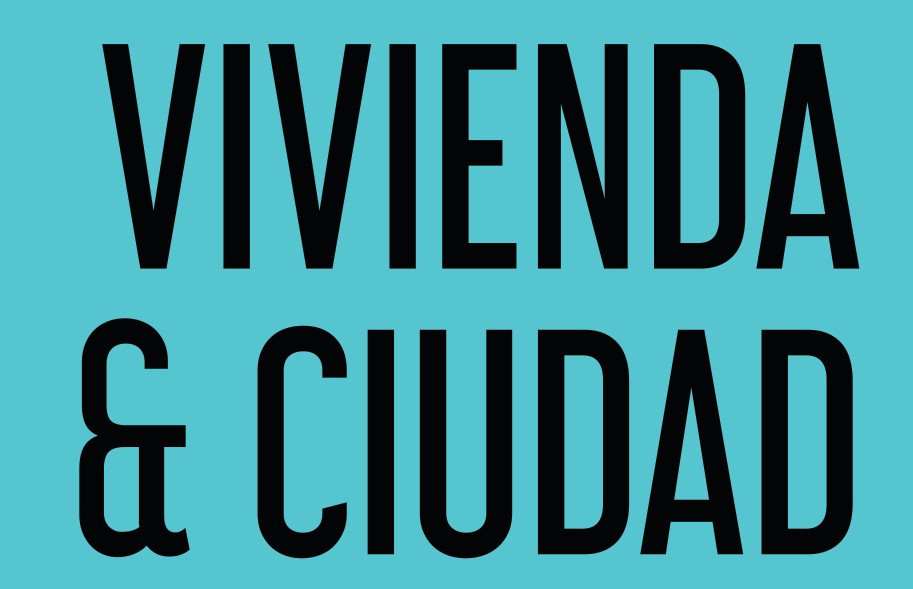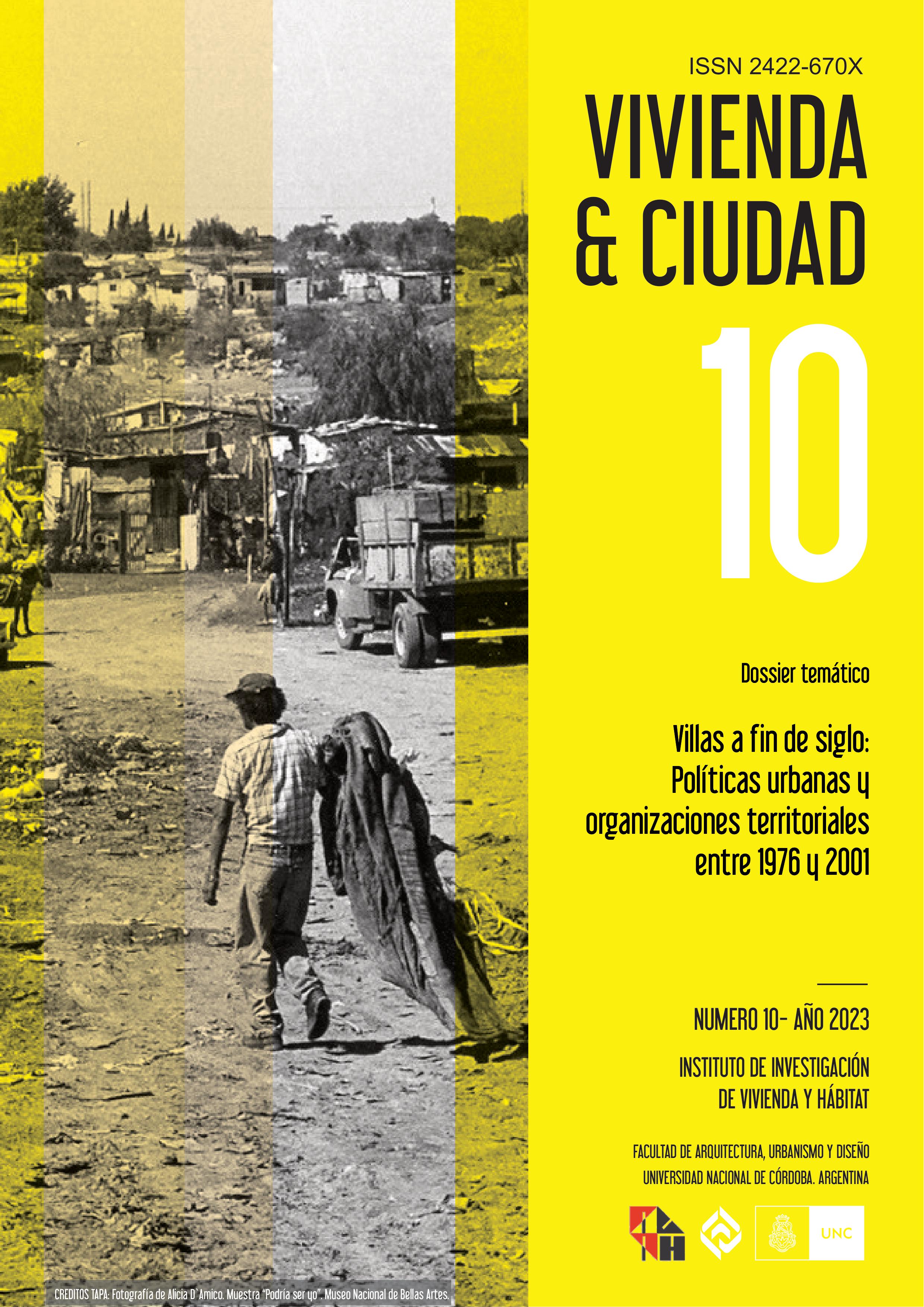Reoccupying, rebuilding, “re-founding”
the repopulation of the villas of south Buenos Aires (1981-1985)
Keywords:
Buenos Aires, democracy, dictatorship, repopulation, villasAbstract
This article reconstructs the process of repopulation of the villas of South Buenos Aires which took place after the eradications carried out by the last dictatorship. It works alongside three axes: reoccupy, rebuild, “refound”, which I consider edges of the more general process of repopulation. The period is primarily the early 1980s,which involved a transition from dictatorship to democracy, when some incipient returns of inhabitants previously evicted took place. This process was gradual and grew in scale throughout that decade. I focus on Villa 20 and Villa Cildáñez, although I extend my observations to other areas of the capital, working with the voices of those who lived there. I read the repopulation as the attempt, by villa families, to recalibrate that machinery of control and displacement established by the dictatorship in line with a spatially exclusive policy; as an implicit and unintentional way of making decisions regarding the distribution of people in the territory. To make it effective, residents continued and deepened the use of mechanisms stemming from the resistance to eradication emerged during the dictatorship. This process was, of course, not free of tensions, and it is precisely the purpose of this article to explore them.
References
Aristizábal, Z., & Izaguirre, I. (1988). Las tomas de tierras en el sur del Gran Buenos Aires. Un ejercicio de formación de poder en el campo popular. Centro Editor de América Latina.
Bellardi, M., & de Paula, A. (1986). Villas miseria: Origen, erradicación y respuestas populares. Centro Editor de América Latina.
Blaustein, E. (2001). Prohibido vivir aquí: Una historia de los planes de erradicación de villas de la última dictadura. Comisión Municipal de la Vivienda.
Calveiro, P. (1998). Poder y desaparición. Colihue.
Camelli, E. (2019). El Movimiento Villero Peronista (1973-1976). Gorla.
Camelli, E. (2021). Desaparecidos y erradicados. Sobre los dispositivos de violencia dictatorial en las villas del Área Metropolitana de Buenos Aires (1976-1983). In V. L. Snitcofsky, E. Camelli, & A. L. Massidda (Eds.), Villas en Dictadura. Córdoba, Rosario y Buenos Aires. (pp. 191–222). Café de las Ciudades.
Carré, M.-N., & Fernández, L. (2011). “La muralla verde”: Áreas verdes como dispositivo para disciplinar la población, Gran Buenos Aires (1976-1983). Provincia - Revista Venezolana de Estudios Territoriales, 25, 115–142.
Castañeda, V., Fernández, N., Garcete Gamarra, Z., Rigano, J. C., Mesa, G., Schowierski, N., González, J., Giménez Maidana, C., Giménez Maidana, P., León Aquino, M., Maguna, P., Miño, M., Ruttia, R., Cañete Gómez, M., Cuenca, R., Galarza, F., Villagrán, M., Vega, M., Quiroga, C., … Álvarez, G. (2012). El barrio obrero conocido como Villa 21-24 Zavaleta: Una historia de dificultades, luchas y conquistas. CENS No 75.
Colombo, P., & Salamanca Villamizar, C. (2019). La violencia en el espacio. UNR Editora.
Costas, G. (Director). (2017). RICC-Relevamiento 1-7-17. https://www.youtube.com/watch?v=xOPgKRvsZJ8&list=PL03EjVHH-qy6rK6Zg0ztJdHFCO3OyZuIj&index=8&t=6988s
Cravino, M. C. (Ed.). (2022). Historia y memoria de villas y favelas. Universidad Nacional General Sarmiento.
Cronista Mayor de Buenos Aires. (2000). Instituto Histórico de la Ciudad de Buenos Aires.
Cronista Mayor de Buenos Aires. (2001). Instituto Histórico de la Ciudad de Buenos Aires.
Cronista Mayor de Buenos Aires. (2002). Instituto Histórico de la Ciudad de Buenos Aires.
Cuenya, B., Almada, H., Armus, D., Castells, J., di Loreto, M., & Peñalva, S. (1985). Condiciones de habitat y salud de los sectores populares. Un estudio piloto en el asentamiento San Martín de Quilmes. Informe final de investigación. Centro de Estudios Urbanos y Regionales.
Cuenya, B., Pastrana, E., & Yujnovsky, O. (1984). De la villa miseria al barrio autoconstruido: Cuatro experiencias organizadas de producción del hábitat popular. Centro de Estudios Urbanos y Regionales.
Cuenya, B., Pastrana, E., & Yujnovsky, O. (2021). De la villa Chaco Chico a la cooperativa 20 de Junio. In Villas en dictadura. Córdoba, Rosario y Buenos Aires. Café de las Ciudades.
Historias que no se dicen. (2007). Escuela de Comercio No6 ‘América’, Buenos Aires, Distrito Escolar 13. https://www.youtube.com/watch?v=qvc8HFfeFD0
Jajamovich, G., & Menazzi, L. (2012). Políticas urbanas en un contexto de dictadura militar. Bitácora Urbano Territorial, 20(1), 11–20.
Massidda, A. L. (2016). Shantytowns and the Modern City: Examining Urban Poverty in South-Western Buenos Aires (1958-1967) [PhD Thesis, University of Cambridge]. https://www.academia.edu/104234688/Shantytowns_and_the_Modern_City_Examining_Urban_Poverty_in_South_Western_Buenos_Aires_1958_1967_
Massidda, A. L. (2013, April 19). Utopian Visions for Buenos Aires Shantytowns: From the City-Without-Shantytowns to Universal Social Housing and Participatory Design. Latin American Utopian Visions: A Critical Look for the 21st Century, Cambridge.
Ordenanza Municipal 33.652, Boletín Municipal de la Ciudad de Buenos Aires ___ (1977). https://boletinoficial.buenosaires.gob.ar/normativaba/norma/74154
Ordenanza Municipal 34.290, Boletín Municipal de la Ciudad de Buenos Aires ___ (1978). https://boletinoficial.buenosaires.gob.ar/normativaba/norma/74156
Ordenanza Municipal 39.753, Boletín Municipal de la Ciudad de Buenos Aires ___ (1984). https://boletinoficial.buenosaires.gob.ar/normativaba/norma/60115
Oszlak, O. (1991). Merecer la ciudad: Los pobres y el derecho al espacio urbano. CEDES/Hvmanitas.
Oxman, J. (2022). Memorias erradicadas. Procesos de recuerdos, silencios, olvidos y borramientos sobre las intervenciones estatales de desalojos forzados en la Villa 20 durante la última dictadura cívico-militar en la Argentina (1976-1983). In M. C. Cravino (Ed.), Historia y memoria de villas y favelas (pp. 101–142). Universidad Nacional General Sarmiento.
Sanabria, C. (2022). La 31. Una historia de resistencia. GES.
Silveyra, M. (2022). Presentes historizados. Sentidos sobre el genocidio argentino (1983-2014). Revista Mexicana de Ciencias Políticas y Sociales, LXVII(244), 165–193.
Snitcofsky, V. (2012). Clase, territorio e historia en las villas de Buenos Aires (1976-1983). Quid 16, 2, 46–62.
Snitcofsky, V. L. (2021). Una villa desaparecida: Historia y escombros en el Bajo Belgrano. In V. L. Snitcofsky, E. Camelli, & A. L. Massidda (Eds.), Villas en Dictadura. Córdoba, Rosario y Buenos Aires. (pp. 223–248). Café de las Ciudades.
Snitcofsky, V. L. (2022). Historia de las Villas en la Ciudad de Buenos Aires. Desde los orígenes hasta nuestros días. Bisman/Tejido Urbano.
Snitcofsky, V. L., Camelli, E., & Massidda, A. L. (Eds.). (2021). Villas en Dictadura. Córdoba, Rosario y Buenos Aires. Café de las Ciudades. https://cafedelasciudades.mitiendanube.com/productos/villas-en-dictadura/
Vargas, J. (2021). La escuelita del barrio de los tanos, cuando resistir es permanecer. In V. L. Snitcofsky, E. Camelli, & A. L. Massidda (Eds.), Villas en Dictadura. Córdoba, Rosario y Buenos Aires. (pp. 277–302). Café de las Ciudades.
Downloads
Published
Issue
Section
License
Copyright (c) 2023 Adriana Laura Massidda

This work is licensed under a Creative Commons Attribution-ShareAlike 4.0 International License.
Authors who publish in this journal agree to the following terms:
a. Authors retain copyright and guarantee to the journal the right to be the first publication of the work as well as licensed under a Creative Commons Attribution-ShareAlike 4 license.
b. Authors may separately establish additional agreements for non-exclusive distribution of the version of the work published in the journal (e.g., placing it in an institutional repository or publishing it in a book), with an acknowledgement of its initial publication in this journal.
c. Authors are permitted and encouraged to disseminate their work electronically (e.g., in institutional repositories or on their own website) before and during the submission process, as this may result in productive exchanges, as well as earlier and greater citation of published work (See The Effect of Open Access).
d. 4.0 International Creative Commons Attribution-ShareAlike 4.0 License.










